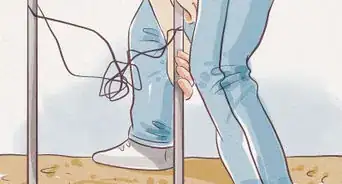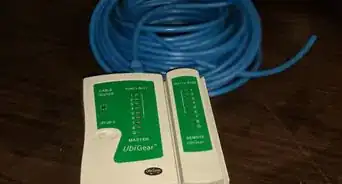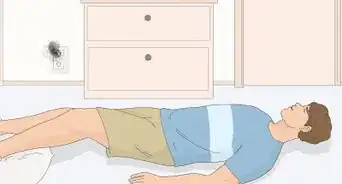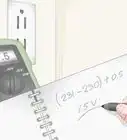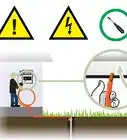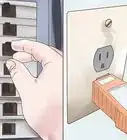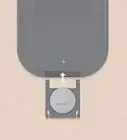This article was co-authored by Jesse Kuhlman. Jesse Kuhlman is a Master Electrician and the Owner of Kuhlman Electrician Services based in Massachusetts. Jesse specializes in all aspects of home/residential wiring, troubleshooting, generator installation, and WiFi thermostats. Jesse is also the author of four eBooks on home wiring including "Residential Electrical Troubleshooting" which covers basic electrical troubleshooting in residential homes.
There are 12 references cited in this article, which can be found at the bottom of the page.
This article has been viewed 53,880 times.
You just bought a brand new TV, mounted it on the wall, and are ready to sit down and be entertained. Then you realize all those cords hanging down from the back are a distracting eyesore and need a way to hide them. Use a simple cord-cover kit, an in-wall mounting system, or get creative with a more decorative approach, and you’ll be enjoying your TV in no time!
Steps
Using a Cord-Cover Kit
-
1Purchase a cord cover kit from your local home improvement store. These kits range from $10 - $30 and are quick and easy to install. Be sure to pick one that is long enough to cover the length between the back of your TV and the electrical outlet.
-
2Measure the length of your visible wires and cut the cover if you need to. Measure from the back of your TV, down to the electrical outlet. If the cover is too long, you'll want to use a handsaw to trim it down to the right size.
- Placing the cover on a flat, sturdy surface and holding in place, grip the handsaw by the handle with your other hand and gently saw at a downward angle in smooth, even movements. Be sure to only apply pressure on the down-stroke.[1]
Advertisement -
3Attach the base to the wall. Typically this requires using a level as a guide to make sure the base is straight and even, and mounting the base on to the wall using the included screws and anchors.
- The bubble should be in the center of the liquid when you hold the level vertically against the wall and look at it at eye-level. This is how you will know that the base will be straight.[2]
- Put the screws through the pre-made holes in the base, and use an electric screwdriver to tighten.
-
4Run the wires neatly inside the base. You'll want to make sure the wires aren't twisted or overlapping. This will help keep them organized.
-
5Snap the cover onto the base. Line the cover up with base on the wall, and simply press the cover firmly into place. You should hear clicking sounds to let you know that it is secure. [3]
- If it doesn't snap on easily, check to make sure you have it lined up properly.
-
6Paint the cord cover using the same paint that's on your wall. This allows the cover to blend in with the background and provides a cleaner, more seamless look.
- If you don't have any leftover wall paint, you could take a swatch into your local home improvement store and buy a small sample size of the same color to paint the cover. Or, this might be a good time to give your entire wall (and the cord cover) a fresh coat of paint!
- If it doesn’t bother you, feel free to leave the cover the same color as it came.
Disguising with Decorations
-
1Stack books along the shelf or cabinet for a low-mounted TV. Strategically place taller books in front of the wires. Experiment with lying some books horizontally and stacking others on top until the wires are covered and you have the look you want.[4]
- Try adding other decorative items like a plant or vase filled with artificial flowers or branches.
-
2Attach wainscot or plank paneling to make a dramatic statement. Available in 32 inches (0.81 m) or 8 feet (2.4 m) pre-cut boards, attach the paneling to the wall using construction adhesive or to wall studs using paneling nails.[5]
- There is no need for cutting since the boards are pre-cut, however, depending on the look you want and/or size of the area you want to cover, you may need to purchase the full-sized 8 foot boards and trim as needed.
-
3Create a fabric panel to place behind the TV and cover the wires. This quick and easy do-it-yourself project is both a functional and stylish way to hide those wires, and it won't cost you very much, either!
- Pick out fabric at your local craft store that matches your style and home decor and attach it to a basic wooden frame using a staple gun.[6]
- You have a ton of flexibility here in deciding how big you want the piece to be. You can choose a rectangular size, just big enough to cover the area; or a long vertical panel that covers the length of the wall.
- You can also hide TV equipment inside a cabinet or in the basement below. An IR repeater can be used to transfer the signal from the remote controls to the devices which need it.[7]
Installing an In-Wall System
-
1Know local and national electrical codes for installing cables in the wall. It’s always a safe bet to hire an electrician to run your wires, but if you opt to do the job yourself, you’ll want to make sure it’s done properly. If not, you could be in violation of electric codes and regulations (for instance, the National Electric Code in the US).[8]
- In the US, create a free account online at the National Fire Protection Association's website to make sure you are in compliance.[9]
- Most countries use either the NEC or International Electrotechnical Commission for their codes and regulations.[10] If you aren't sure which you should follow, contact your local electrical division for more information.
-
2Purchase an in-wall power kit to hide wires in the wall. These kits can be purchased online or at your local home improvement store and range from $40 - $100 and include all of the required tools. This option costs a little more money and takes a little more time, but will give you the cleanest, most aesthetically pleasing look.
- Some kits come pre-wired and make for even easier installation.
- Consider hiring an electrician to install a power outlet directly behind the TV so you don't have to worry about hiding the power cords.[11]
-
3Drill two holes in the wall to hide and route the wires. Follow the instructions included with your kit for proper installation and placement of the holes. Typically it requires drilling one hole in the wall behind the TV, and another towards the bottom of the wall near an existing outlet.
- Using the hole saw that came in your kit, simply press the saw against the wall where you want the hole to be, and twist the handle in a clockwise motion. Less than 10 twists, and you should have a perfectly smooth, even hole![12]
-
4Bundle the cords together and route them through the new holes. Insert the bundled cords into the top hole behind the TV. From the bottom hole, using the fish tape that's included in your kit, guide the cords inside and down the wall until you can pull them through the hole.[13]
- Once you have all of the cords coming out of the second hole, simply plug them into the original outlet.
- It's very important to use "in the wall rated" HDMI lines if you'll be doing this.[14]
Expert Q&A
Did you know you can get premium answers for this article?
Unlock premium answers by supporting wikiHow
-
QuestionHow can I hide the power cords behind my TV?
 Jesse KuhlmanJesse Kuhlman is a Master Electrician and the Owner of Kuhlman Electrician Services based in Massachusetts. Jesse specializes in all aspects of home/residential wiring, troubleshooting, generator installation, and WiFi thermostats. Jesse is also the author of four eBooks on home wiring including "Residential Electrical Troubleshooting" which covers basic electrical troubleshooting in residential homes.
Jesse KuhlmanJesse Kuhlman is a Master Electrician and the Owner of Kuhlman Electrician Services based in Massachusetts. Jesse specializes in all aspects of home/residential wiring, troubleshooting, generator installation, and WiFi thermostats. Jesse is also the author of four eBooks on home wiring including "Residential Electrical Troubleshooting" which covers basic electrical troubleshooting in residential homes.
Master Electrician
Warnings
- When using a handsaw, wear safety glasses or goggles to protect your eyes in case of flying pieces. Also, always be sure to saw in a downward motion, paying close attention to the placement of the hand holding down the cover.[15]⧼thumbs_response⧽
References
- ↑ https://www.ccohs.ca/oshanswers/safety_haz/hand_tools/handsaw.html
- ↑ http://www2.ljworld.com/news/2016/apr/30/fix-it-chick-how-use-spirit-level/
- ↑ https://www.legrand.us/diy-projects/diy-tv-onwall.aspx
- ↑ http://theeverygirl.com/how-to-hide-unsightly-electronics-and-cords/
- ↑ http://www.designthespace.com/how-to-install-wood-paneling-guide/
- ↑ http://lorridynerdesign.com/how-to-hide-ugly-tv-wires/
- ↑ Jesse Kuhlman. Master Electrician. Expert Interview. 30 June 2020.
- ↑ https://www.ecmag.com/section/codes-standards/out-sight-out-mind
- ↑ https://www.nfpa.org/NEC/About-the-NEC/Free-online-access-to-the-NEC-and-other-electrical-standards
- ↑ https://www.testandmeasurementtips.com/the-difference-between-the-nec-and-iec-60364/
- ↑ Jesse Kuhlman. Master Electrician. Expert Interview. 30 June 2020.
- ↑ https://www.youtube.com/watch?v=K3_tNHQEZbs
- ↑ https://www.youtube.com/watch?v=K3_tNHQEZbs&feature=youtu.be
- ↑ Jesse Kuhlman. Master Electrician. Expert Interview. 30 June 2020.
- ↑ https://www.ccohs.ca/oshanswers/safety_haz/hand_tools/handsaw.html
About This Article
One of the downsides of hanging your TV on the wall is the wires being visible, but fortunately, you can easily disguise them with some clever tricks. One way to hide the wires is to buy a cord cover kit, which has a thin plastic strip to contain the wires. Once you’ve mounted the kit on the wall, paint over it to make it blend in with the wall. If you only need to cover a small distance and you have a console table under your TV, place objects like books or plants in front of the wires to hide them. Alternatively, attach a wood or fabric panel behind the TV but in front of the wires for a more elegant solution. For more tips, including how to hide your TV’s wires in the wall, read on!
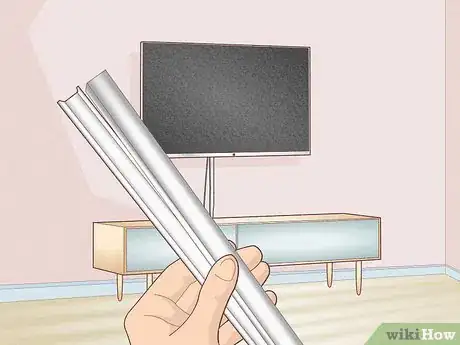
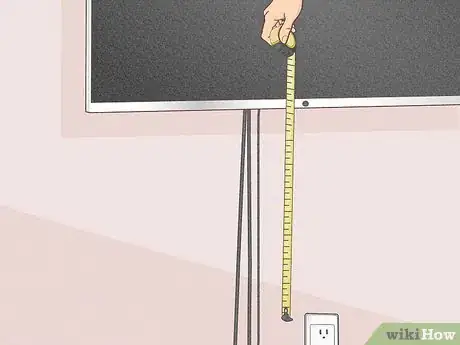

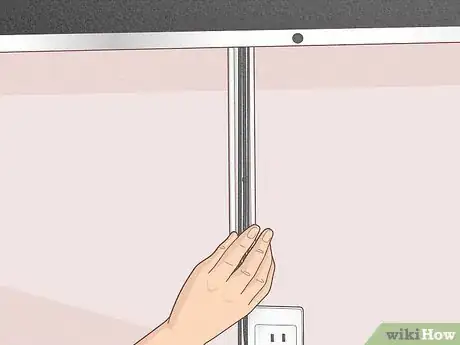
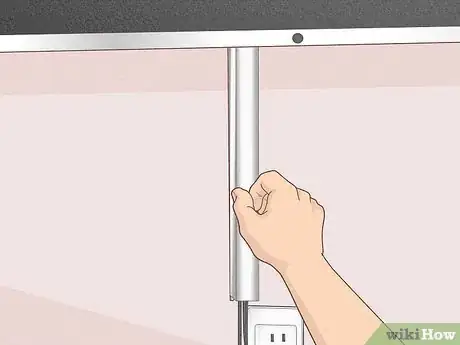
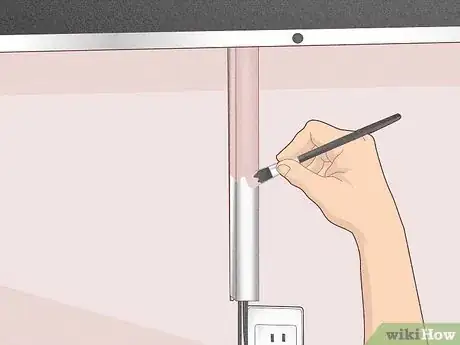
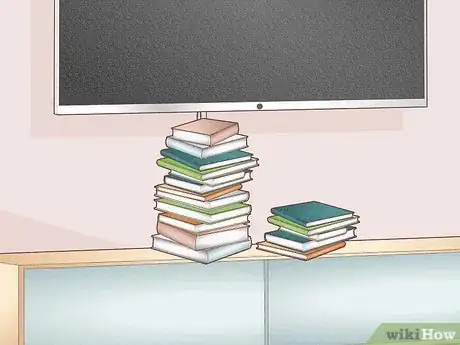

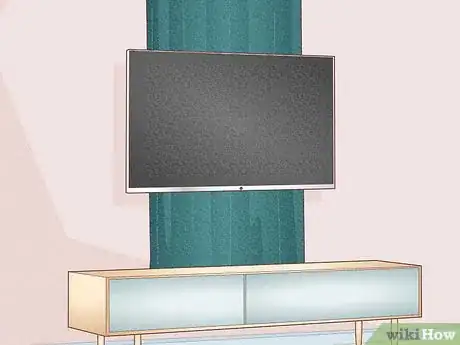

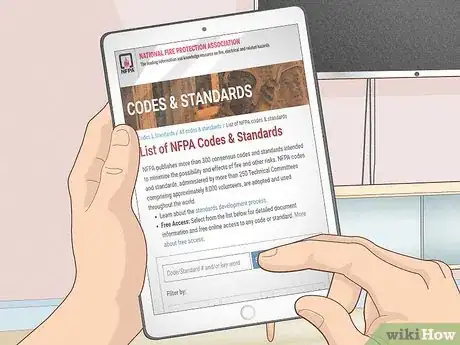
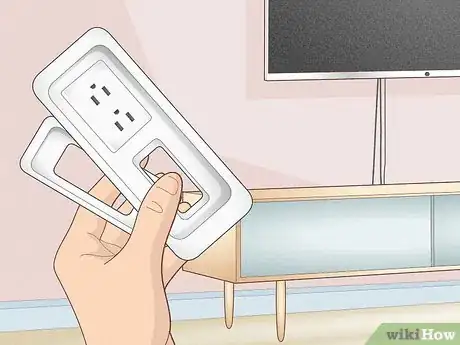

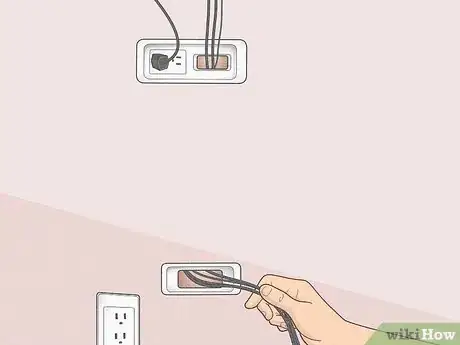
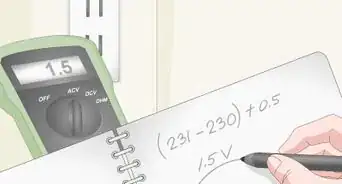
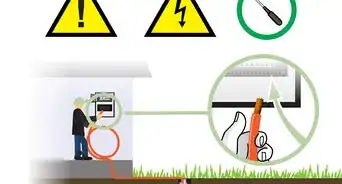
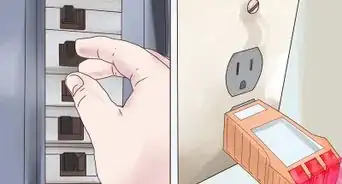
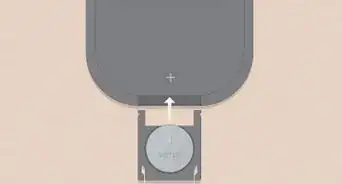
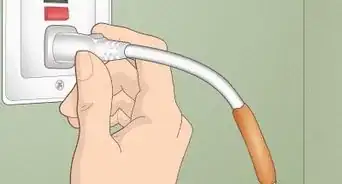
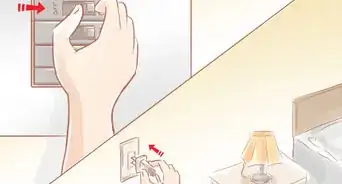
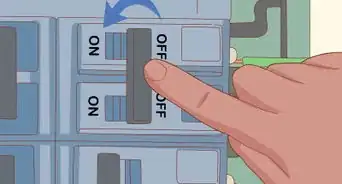
-Electric-Shock-Step-8.webp)
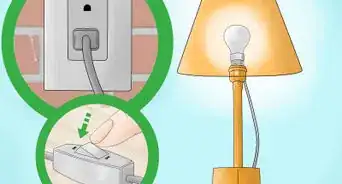
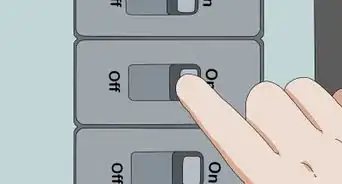
-Step-6-Version-2.webp)
